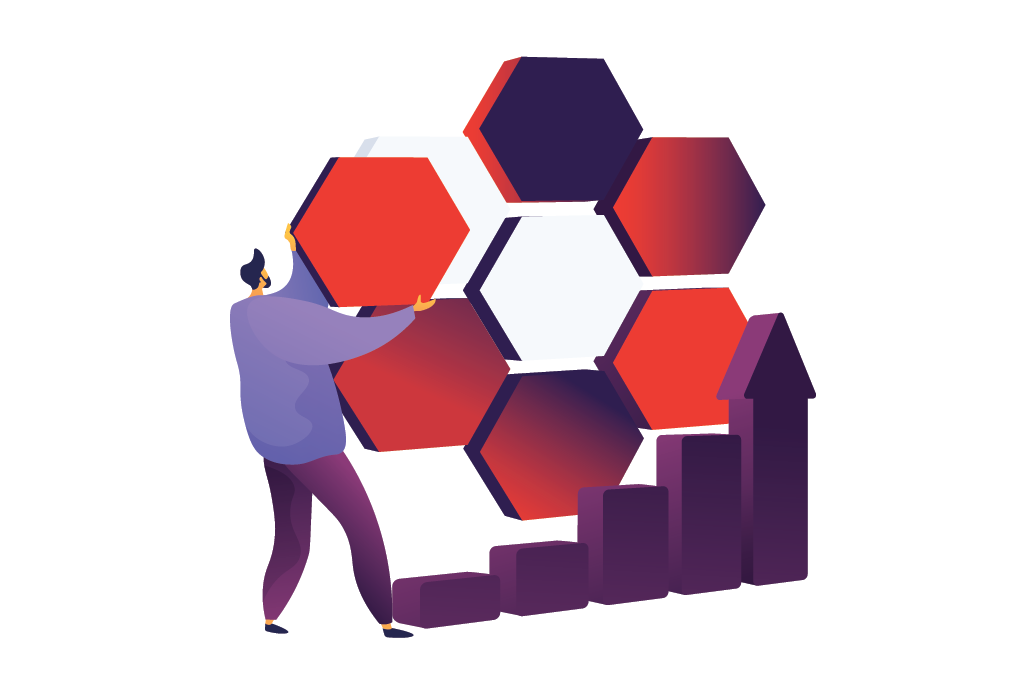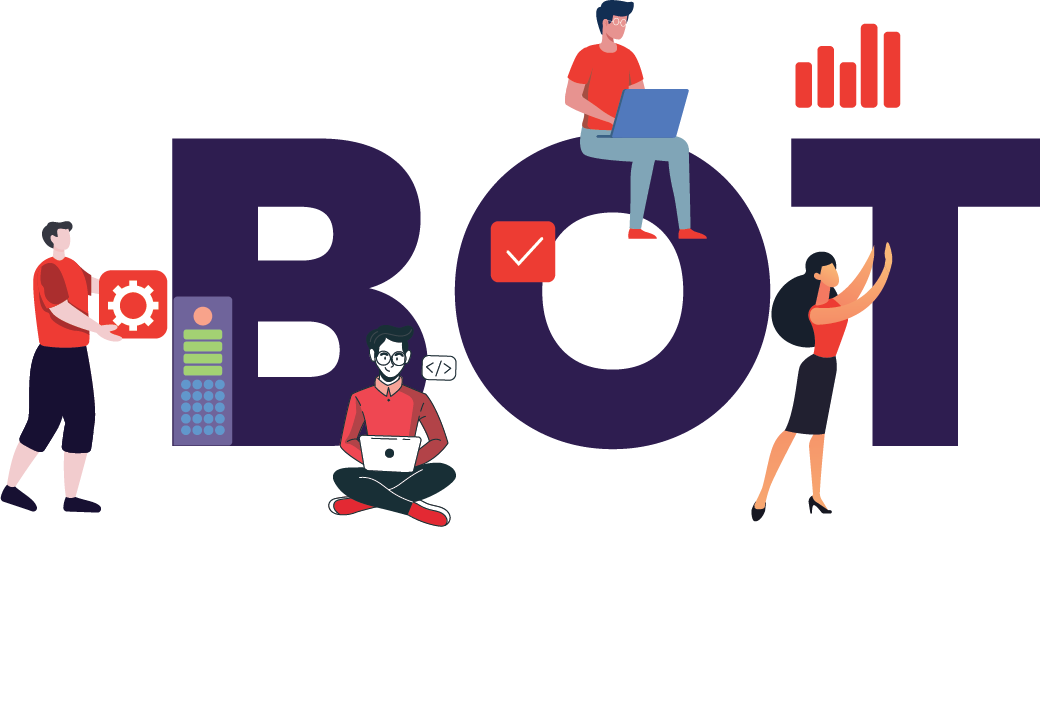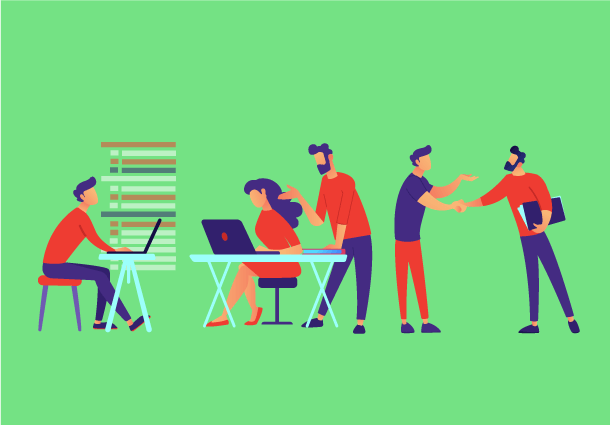The Bridge to Excellence: In-Depth Exploration of the Build Operate Transfer
Build Operate Transfer in software development is generally a utilized archetype that gives unique advantages to organizations wishing to venture into new business sectors or offshore areas. Build, Operate, and Transfer are the three unmistakable aspects of this system. Investigate each stage in more detail to perceive how the BOT model could help software development efforts.
In the cutting-edge world, outsourcing IT software is a strategy that has become well known on the grounds that the advantages it gives have further developed business execution; however, there are undeniable worries about the loss of ownership, operational control, or any potential harm. As a result, among the different IT outsourcing engagement models, a BOT team is believed to be a viable method for lessening the uncertainties to a minimum.
They are stretching out the need to develop their product and make technical investments as their firm extends. The accessibility of funds was simultaneously under strain from other operational contemplations. Subsequently, the Build-Operate-Transfer (BOT) model has acquired prominence as a project finance strategy.
As per the idea, an enterprise (the Client) utilizes an alternate organization (the Partner) to fund, develop, and run an office or business activity, frequently in another region or country, with the provision that the operation of the facility might be gotten back to the Client.
The Trifold Evolution: Navigating the Three Phases of the BOT Model
The three phases of bot models, from their earliest stages to their experienced functionality, capture the movement from basic automation to complex AI-powered interactions, addressing the continually moving technological world. User engagement and the way companies draw in with their customers are being reclassified by this change. Build, Operate, and Transfer are the three unmistakable aspects of this system. Investigate each stage in more detail to perceive how the BOT model could help software development efforts.

Build Phase: To develop the software product or project, the parent business teams up with a specialized software development team or an offshore software development firm during the Build phase. The parent firm keeps up with unlimited authority over the development process, ensuring that the software complies to their unique requirements and corporate objectives. The parent firm may now use expert personnel, technological know-how, and cost-effective resources while keeping up with complete responsibility for the project’s direction.
Operate Phase: During the Operate stage, the offshore partner or the software development team takes command of working and administering the project or program that has been made. This involves exercises including continual upkeep, assistance, and consistent improvement to ensure the product runs effectively and fulfills changing corporate needs. Prior to moving on to the next stage, the parent firm may intently monitor the collaboration and assess the project’s success.
Transfer Phase: During the Transfer phase, the offshore firm has the decision to completely take command of the project and the software development team. Now, the software development team easily incorporates into the parent organization’s workforce, bringing all tasks, expertise, and obligations under the parent organization’s influence. The Transfer phase gives the parent organization a smooth change, eliminating possible disturbances and empowering continued progress with complete autonomy.
Revealing the Advantages of Build Operate Transfer Model
Cost-effectiveness: The BOT (Build-Operate-Transfer) model is an essential strategy that empowers organizations to take advantage of offshore resources that are savvy without forfeiting quality. Organizations might take advantage of the benefits of decreased labor expenses and economies of scale that are normal in certain countries by teaming up with an experienced offshore software developer to deploy resources more effectively and optimize budgets, organizations send assets all the more really and advance financial plans, associations may significantly reduce their operating and development costs.
Time-to-Market Acceleration: In the fast-paced business climate of today, time is of significance and is one of the crucial advantages of build operate transfer model. The software development process can be rushed because of the BOT model. Organizations might optimize workflows, limit bottlenecks, and accelerate decision-making, prompting more limited development cycles, with the assistance of an experienced and committed offshore staff. The faster delivery of products and projects to market gives them an upper hand and permits them to hold onto market prospects.
Risk reduction: Working with overseas development teams or entering new business sectors may be intimidating. During the Build and Operate stages, organizations may mindfully assess the performance and cultural fit of the offshore partner because of the BOT model, which fills in as a risk mitigation approach. Before totally focusing on the Transfer phase, organizations could involve this time as a time for testing to survey the caliber of work, communication, and timeliness. This system decreases potential risks and ensures a more consistent transition of activities.
Access to Unparalleled Talent: The BOT model offers admittance to a tremendous pool of brilliant experts and specialized talents, which is one of its most significant benefits. Offshore locations frequently have serious areas of strength for a pool of seasoned developers, designers, and subject matter experts, particularly in countries with booming IT areas. By using this aptitude, associations might infuse creative ideas, groundbreaking thoughts, and cutting-edge technology into their software development projects, in the end delivering better goods and services.
Seamless Scalability: In the continuously shifting professional workplace, flexibility and adaptability are basic achievement factors. The BOT model makes it simple to scale software development teams, empowering organizations to rapidly change team sizes as per project needs. This adaptability ensures productive resource use, whether inclining up to address rising needs or scaling back when a project is finished. Organizations may securely alter their development capacities to meet the changing prerequisites of the business as they grow or deal with shifting market dynamics.
Embarking on B.O.T Projects: Where Vision, Operation, and Transition Converge
Build Operate Transfer (BOT) projects in software development envelop a different cluster of plans intended to meet the extraordinary requirements and objectives of different organizations. These tasks empower organizations to use external expertise for initial development and operation before eventually assuming full control and ownership.  The BOT model cultivates a cooperative environment where organizations can take advantage of specific skills and resources, effectively relieving the difficulties of talent shortages and skill gaps. By collaborating with experienced external groups, organizations can explore complicated specialized scenes, upgrade project execution, and accomplish a competitive edge. This model speeds up project timelines as well as improves the quality of software solutions, empowering organizations to swiftly respond to market dynamics and position themselves at the very front of innovation.
The BOT model cultivates a cooperative environment where organizations can take advantage of specific skills and resources, effectively relieving the difficulties of talent shortages and skill gaps. By collaborating with experienced external groups, organizations can explore complicated specialized scenes, upgrade project execution, and accomplish a competitive edge. This model speeds up project timelines as well as improves the quality of software solutions, empowering organizations to swiftly respond to market dynamics and position themselves at the very front of innovation.
The BOT model’s powerful methodology engages organizations to focus on center capabilities while guaranteeing consistent progress of information and responsibilities. As companies gain valuable insights from the external team’s expertise, they develop a foundation for long-haul achievement, making Build Operate Transfer projects an essential course for growth and innovation in the software development landscape. Let’s take a look at some typical Build Operate Transfer (BOT) project types utilized in software development and how they address different situations:
Offshore Development Centres (ODCs):
Build Operate Transfer drives initiatives that frequently take the state of offshore development centers. As per this technique, a business lays out a specific development center in collaboration with an offshore service provider. While the enterprise keeps up with supervision and control, the supplier is responsible for the center’s hiring, management, and daily operations. The organization progressively learns more about the center’s capacities and aligns it with its goals. A well-established development team and infrastructure are made accessible to the firm once a particular degree of maturity has been reached and the center has been handed to it.
Product Development:
In a BOT project of this nature, a business works with a software development partner to create a software product from conception to commercialization. The full development lifecycle, including design, coding, testing, and deployment, is overseen by the external team. The organization recovers control when the product fills in popularity and arrives at development. This system empowers companies to cutting-edge software without utilizing huge internal resources.
Application Support and Maintenance:
Organizations frequently take on BOT initiatives to designate the continuous support and maintenance of their software products. The upkeep, performance, and working of the application fall under the domain of the outer specialist co-op. The business becomes familiar with the provider’s abilities and effectiveness as the project goes along. The business may flawlessly take control of the maintenance activities after a suitable level of trust and operational excellence has been accomplished.
Infrastructure and services offered by the cloud:
Some Build Operate Transfer projects focus on creating and keeping up with cloud infrastructure and services because of the rising popularity of cloud computing. The essential cloud infrastructure is planned, implemented, and maintained by an outside provider, opening up the business to focus on software creation and application deployment. Contingent upon the project’s performance and changing demands, the corporation may ultimately choose to either proceed with the collaboration or move the operation of the cloud infrastructure in-house.
Business intelligence and data analytics:
A BOT project might involve the development of analytical platforms and tools for firms hoping to gain by the capability of data analytics and business intelligence. To work with data-driven decision-making, the external team designs and creates solutions that collect, analyze, and visualize data. The organization may handily integrate the solution into its operations and plans as it procures information about the project’s potential and adequacy.
Development of mobile applications:
Organizations can take part in BOT projects focusing on mobile app development if they have any desire to build their digital reach through mobile applications. From design and coding through testing and deployment, the entire development process is taken care of by the external team. Ownership and the management of the application are moved whenever it has acquired fame and is in accordance with the organization’s goals. This empowers the business to oversee updates, improvements, and user engagement.
Crossing the Threshold: An In-depth Summation
BOT projects give various benefits, including lower beginning capital outlays, admittance to specialized knowledge, risk sharing, and functional adequacy. These drives permit organizations and governments to take on challenging endeavors, utilize outside resources, and promote public-private collaborations to achieve long-haul objectives.
The adaptability and risk-mitigation capacities of the BOT model are its fundamental advantages. Prior to resolving to full ownership, it empowers firms to test the suitability of new enterprises, limit up-front costs, and assess operating viability. Offshoring with the BOT model offers a systematic methodology for sustainable growth and strategic decision-making, whether it is utilized in worldwide extension, mechanical drives, infrastructure development, startup brooding, or outsourcing.
The use of build-operate transfer in software development empowers organizations to deal with the intricacy of contemporary development projects more skillfully and effectively. Organizations might energize development, advance organization growth, and build a strong market presence by using cost reductions, time-to-market acceleration, risk mitigation methods, access to outstanding talent, and seamless scalability.
Pattem Digital: A Sterling Choice for BOT Services
As a prominent build operate transfer services provider, we excel in supporting numerous organizations to expand their BOT workforce globally. We handle all the complexities, ensuring a seamless and rapid augmentation of your BOT team. When the time is right, we facilitate a smooth transfer of the BOT team to your ownership.
Throughout the transfer process, we provide comprehensive assistance, from identifying suitable office spaces to securing utilities and sourcing additional vendors as required. The best part is that you retain the development team you’ve grown to trust, just as they have been since day one. Partner with us for a hassle-free and successful BOT workforce expansion.


